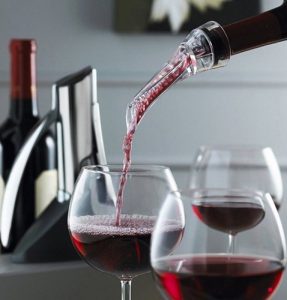 For thousands of years, wine has been surrounded by mysteries and specific symbols, while at the same time, a culture of consumption of this aromatic and tasty grape drink has developed. To fully open the bouquet before tasting, there is an aerator for wine - this is such a device with which the wine is saturated with oxygen and the whole gamut of its taste sensations is revealed.
For thousands of years, wine has been surrounded by mysteries and specific symbols, while at the same time, a culture of consumption of this aromatic and tasty grape drink has developed. To fully open the bouquet before tasting, there is an aerator for wine - this is such a device with which the wine is saturated with oxygen and the whole gamut of its taste sensations is revealed.
If you like wine, then you will be interested to know how such products help to reveal all the hidden reserves of this drink before drinking. In this article you will find a description, principle of operation and varieties of these devices that are unusual for the average user.
Content
What is a wine aerator
This original device was invented by software engineer Rio Sabaddichi, in appearance it is a glass flask through which wine is poured into a glass. The main task of this unique device is to maximize the quality of wine by saturating it with oxygen. Having uncorked a bottle of wine, do not rush to pour it into glasses.
Experienced sommeliers advise giving the noble drink time so that the bouquet of aromas is fully revealed, it should be free from alcohol fumes, tannin and fermentation products that are contained inside the bottle. This process can last from a few seconds to two hours - it depends on the amount of tannin, which gives astringency to wine.
The wine should be saturated with oxygen, as the winemakers say, “breathe”, the alcohol vapor disappears, the aroma opens, you can fully enjoy the taste features of this wonderful drink.
Wine Decanting Technology
Pouring a drink from a bottle into a special decanter for aeration, purification from sediment is called decantation of wine. This technology will be used for red varieties, but among white wines there are species that, after a similar exposure, better reveal their aromas and taste properties.
For the first time, this process began to be done many centuries ago, when glass bottles were a special luxury, and wine was bottled from barrels. Some owners of drinking establishments poured wine in advance on plain glass decanters and then served it to visitors, during which time the drink was saturated with oxygen and revealed all its properties. Later, special forms for decanters were developed, where aeration was carried out.
This process is primarily subject to red wines that have not been filtered for 2-15 years, decanted and high quality burgundy white varieties. Simple table drinks from the supermarket do not have sediment, so it does not make sense to aerate them. Before this process, the wine should lie down for several days in a horizontal position so that the precipitate is collected in one place.
Decantation stages
Before decanting, it is recommended to rinse the carafe of crystal or the decanter with hot water. The whole process is carried out in the presence of visitors and consists of the following steps:
- Light a candle on the table so that it plays the role of additional lighting and helps to notice the precipitate approaching the throat of the bottle in time.
- The label should be deployed to visitors, with the name of the manufacturer, the wine region and the year the crop was harvested.
- Trim the capsule and put the foil in your pocket, then wipe the neck of the bottle to remove plaque.
- With a special corkscrew, pull the cork out three quarters, then grab the bottle in your hands and remove the cork without cotton.
- Inspect it carefully and smell it, while there should be no smell of musty or mold, which indicate poor quality contents in the bottle.
- Gently put the cork on the saucer and place it near the guests so that they can also verify the quality of the wine.
- Wipe the top of the bottle a second time, then pour some wine into your glass for tasting.
- Slowly pour the drink into the decanter, carefully monitoring the sediment. The neck should be kept opposite the candle so that it illuminates the inside of the bottle.
- To saturate the wine with oxygen, it is necessary to unwind the contents of the carafe several times clockwise, then let the wine stand for at least 5 minutes.
Experienced sommeliers know all the stages of this process by heart, well, but it will also come in handy for you: it will be very original to surprise guests with such an original process at home.
Types of aerators
Today there are a lot of manufacturers of aerators, but we will list only the most famous. The leader is considered to be an aerator from the USA Vinturi, according to experts, this is the best product on the world market. Aerator is made of high quality plastic in accordance with all requirements of the food industry.
After 30 seconds, this device improves aroma and reveals the whole bouquet of a noble drink. After use, the aerator is easily disassembled for cleaning, which can be done in a dishwasher.
Vin Bouquet from Spain produces high-quality aerators that are in great demand in the market of wine accessories:
- The Compact product is convenient to use when traveling or outdoors, the aerator is put on an open bottle, and you can wash it in any natural source;
- an electric aerator allows you to saturate the wine with oxygen directly in the bottle - in a minute the drink gets rid of the unpleasant aftertaste of tannin and becomes aromatic, batteries are used to operate the product.
VacuVin is an aerator from China, the fundamental difference is that it is stored by putting bottles on the neck. When uncorking wine, it helps to avoid prolonged aeration in the decanter, and saturates the drink during pouring into glasses. For this, the product is inserted into the throat of the bottle, where it is firmly fixed.
Its advantages:
- compact sizes;
- original design contributes to high-quality aeration;
- transparency allows you to notice the appearance of sediment in time.
After use, it is manually washed in running water.
Principle of operation
It is based on the following: it is known that the wine, being in a sealed bottle, is deprived of free oxygen circulation, therefore, alcohol-containing vapors are concentrated, fermentation products are formed in the form of sediment, and the tannin content increases. All this has a strong influence on the taste of the wine.
During the pouring of the drink into another container, air is forced from its movement, oxygen bubbles displace excess alcohol vapors and tannins from the contents. At the same time, the taste qualities, according to wine-makers, become brighter, more refined, and the aroma increases many times and sparkles with all its faces, as a noble wine should be made from grapes that are saturated with the sun.
The protagonist is a glass hollow container of a special shape, vaguely reminiscent of a laboratory flask - it is through it that the wine flows into the glass. The process does not take much time, but the drink manages to be saturated with oxygen, which favorably reflects on its aroma and taste.
It must be remembered that completely different aerators have been developed for red and white wine, you can buy them in a set or individually, so the producers try to satisfy the needs of every lover of this noble drink.

How to choose
Wine connoisseurs know that for the full disclosure of all hidden reserves, this drink needs a special vessel made of transparent glass with a narrow neck and a wide bottom - a decanter that sommeliers use in expensive restaurants.The process of uncorking a bottle and spilling wine is a ceremony whose basic tenets are strictly followed.
At home, it is better to use an aerator, because it significantly reduces the entire process and does not spoil aged wines. Here are a few of its benefits:
- Takes up little space in the kitchen.
- Some products are worn on the neck of the bottle during storage.
- Easy to clean and rinse in a dishwasher with tableware.
- The aerator does not spoil the taste of aged wine.
When buying this device, users must remember that the aerator for red and white wine differ in shape and size. White alcohol contains much less tannins, so these types of wine need less oxygen, and the whole aeration process is much faster.
findings
Even Omar Khayyam claimed in his poems that wine does not endure haste - it should be drunk slowly and with meaning. True gourmets open a bottle of wine in the same way that the Chinese conduct a tea ceremony - slowly and with dignity, clearly performing all the stages of classical decantation. In addition, we must remember that each sort of wine must first be cooled to a certain temperature, for this in bars and restaurants use wine racks.
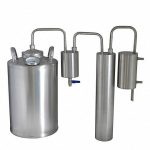
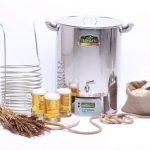
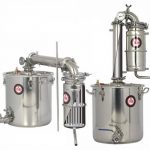

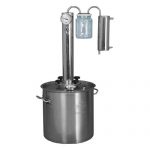
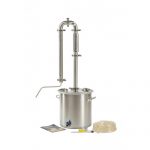
Vacu Vin - Netherlands. Aeration of red and white wine with different aerators - marketing.